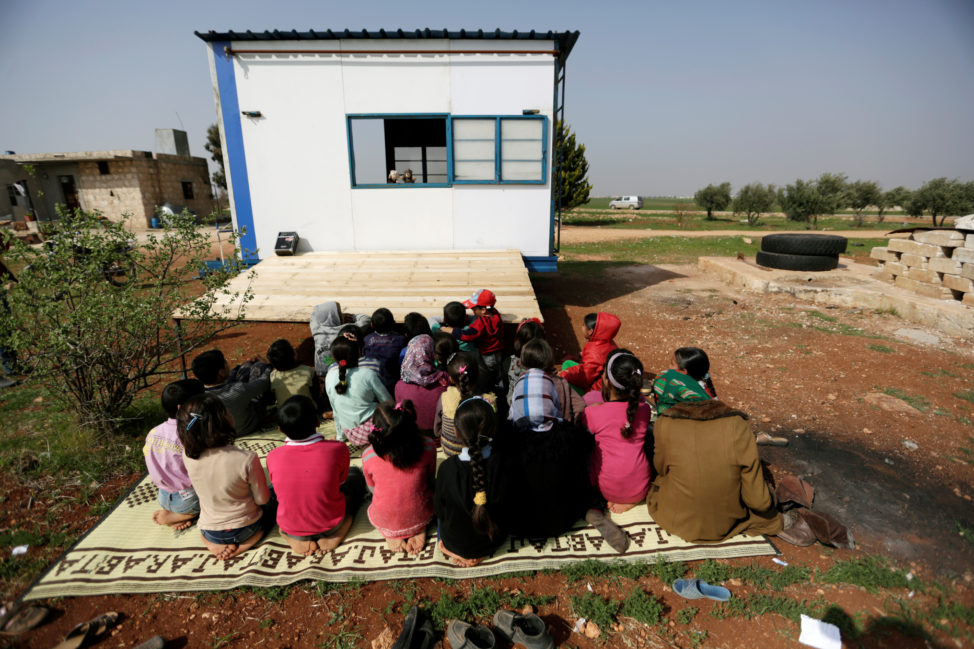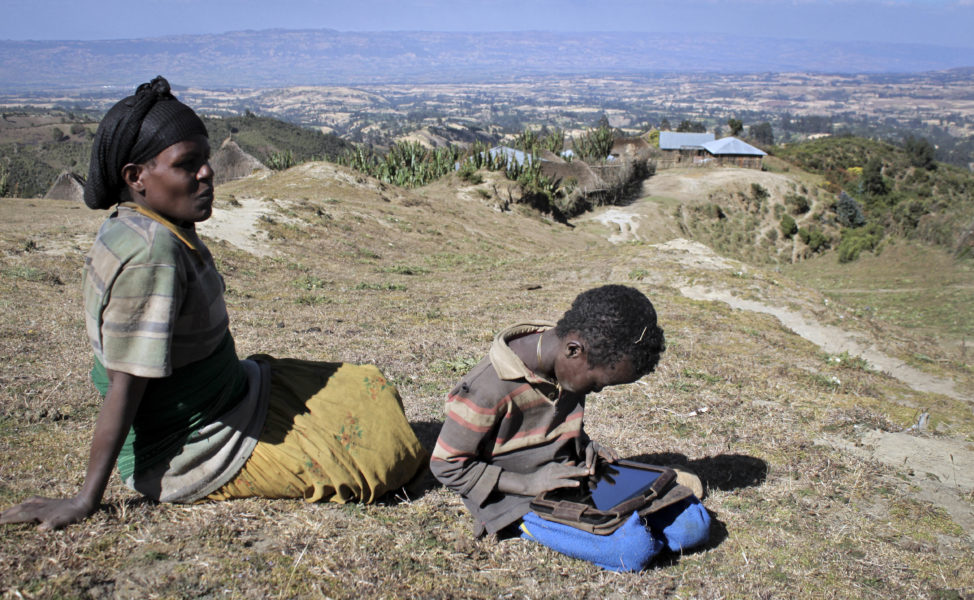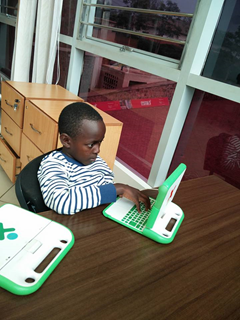
FILE – Children watch volunteer teachers perform a puppet show inside a mobile educational caravan for children who do not have access to schools on the outskirts of Saraqib, Idlib province, Syria, March 10, 2016.
Wars around the globe have left 24 million children in 22 conflict-plagued countries with little hope for an education or a future. But through a host of partnerships, mobile technology and digital learning are finding a way to salvage that future.
Responding to the United Nations Global Compact (UNGC), a call to companies to align their work with sustainable development goals, several nonprofits and organizations are working on education in conflict zones, where nearly one in four out of 109.2 million primary and lower-secondary school children are not going to school, according to UNESCO.
In Italy, utility firm Enel is working with the office of the United Nations High Commissioner for Refugees on the Educate a Child program to guarantee primary school access to Syrian refugees. And in East Africa, where power is often unreliable, nonprofit Maendeleo Foundation provides low-income areas with mobile solar computer classrooms, and training programs in schools and communities across Uganda.
Another solution comes from Brck, a team of African developers and technologists who developed kits and tablets that can be recharged wirelessly. The units are designed to introduce digital education to African classrooms. While not free, they come with digital books, videos and other learning material applicable to the region.
One Laptop per Child

FILE – Abelbech Wagari sits near her son, Kelbesa Negusse as he plays with a tablet computer given to him by the One Laptop Per Child project in the village of Wenchi, Ethiopia. (AP)
Operating out of Florida, nonprofit One Laptop per Child (OLPC) partners with local groups to provide laptops and educational material in communities around the world with little or no access to technology, be it as a result of conflict or poverty.
“We developed a laptop computer that was designed specifically for educational use by children,” said OLPC’s legal counsel, Leah Shadle. “And we have developed a comprehensive educational program that comes with the laptop that includes things like teacher training, technical support, monitoring and evaluation services.”
The tailored content “aligns with each school’s existing curriculum,” she said. It is not a substitute for federal and state curricula, nor are the laptops intended to replace existing educational tools.
“It’s just meant to be … an additional tool to enable teachers to keep the content that they already have to teach, but to do so in a really innovative and creative way,” she said.

A child uses a laptop provided by One Laptop per Child at a public library in Kigali, Rwanda. (OLPC)
One of the group’s projects in Rwanda is being implemented in collaboration with the government.
“We … maintain … a corner in the Kigali city library where our computers are available for children,” said Shadle. “… There have been refugees from Burundi who have moved into Kigali and then come to the computer lab at the library and who also are attending school once we have the program implemented.”
Call to action
These are just a few of the businesses and nonprofits tackling the education gap in conflict zones in collaboration with the United Nations and its partners.
UNGC, Sustainia, an international sustainability think tank, and DNV GL, an advisory and risk-management company, collaborate on an annual Global Opportunity Report that scouts out opportunities for businesses to implement sustainable development projects in areas of conflict.
“Children trapped in conflict, which is half out of school children in the world – they live in conflict areas. So for us to deliver on the sustainable development goals that’s really important,” said Marianne Haahr, Project Director at Denmark-based Sustainia.
The Global Opportunity Report queries thousands of business leaders about potential partnerships in high-risk markets. “And what surprised us the most was for sure that the business leaders across the globe see especially delivering digital learning tools to children in conflict as a very promising market opportunity,” she said.
Haahr is optimistic that education technologies, particularly personalized educational content and tailor-made algorithms that adapt to the needs of the child can help bridge the gap. But she cautioned that delivering this type of digital content will be a challenging task where public infrastructure has broken down.

2 responses to “Education Tech Pulls Children’s Future Out of Rubble of War”
[…] Education Tech Pulls Children’s Future Out of Rubble of War //blogs.voanews.com/techtonics/2017/02/03/education-tech-pulls-childrens-future-out-of-rubble-o… […]
[…] Source: blogs.voanews.com/techtonics/2017/02/03/education-tech-pulls-childrens-future-out-of-rubble-of-war/ […]